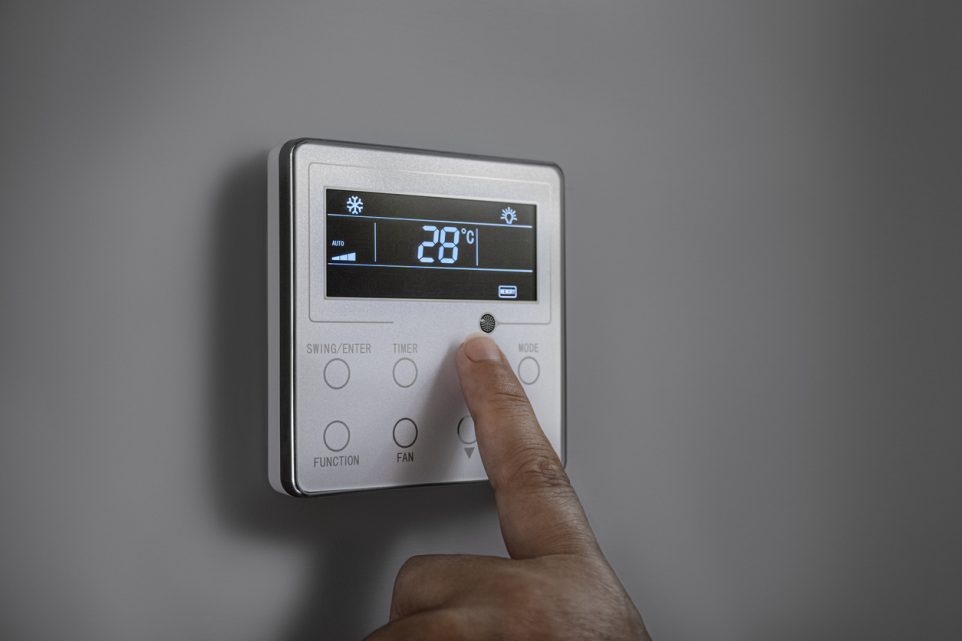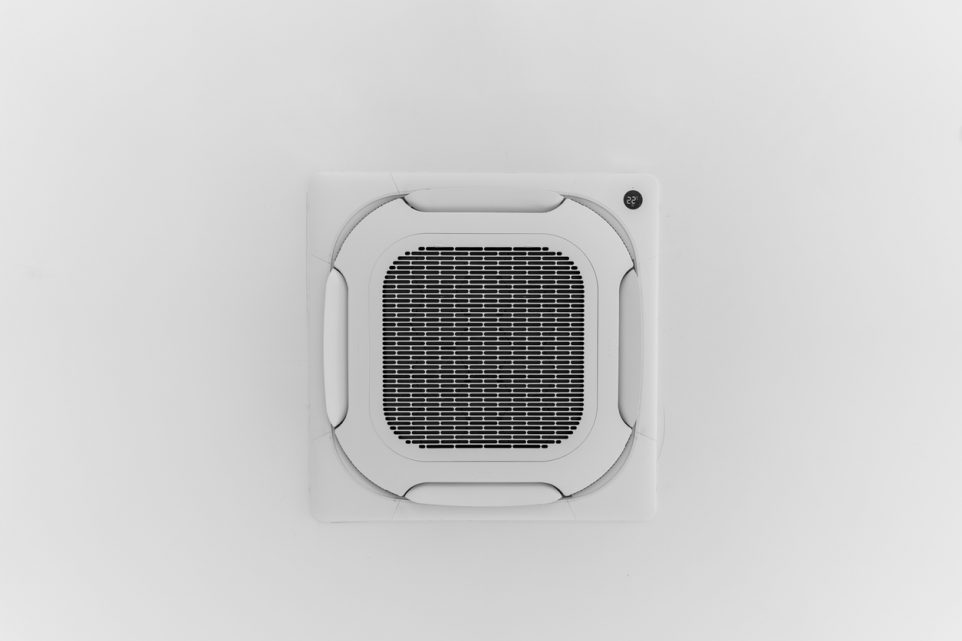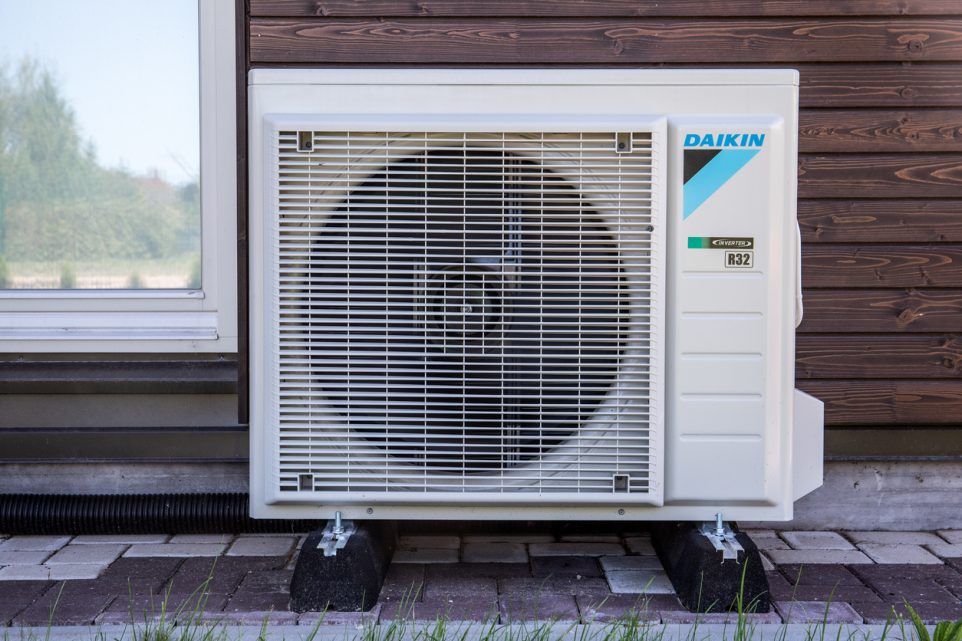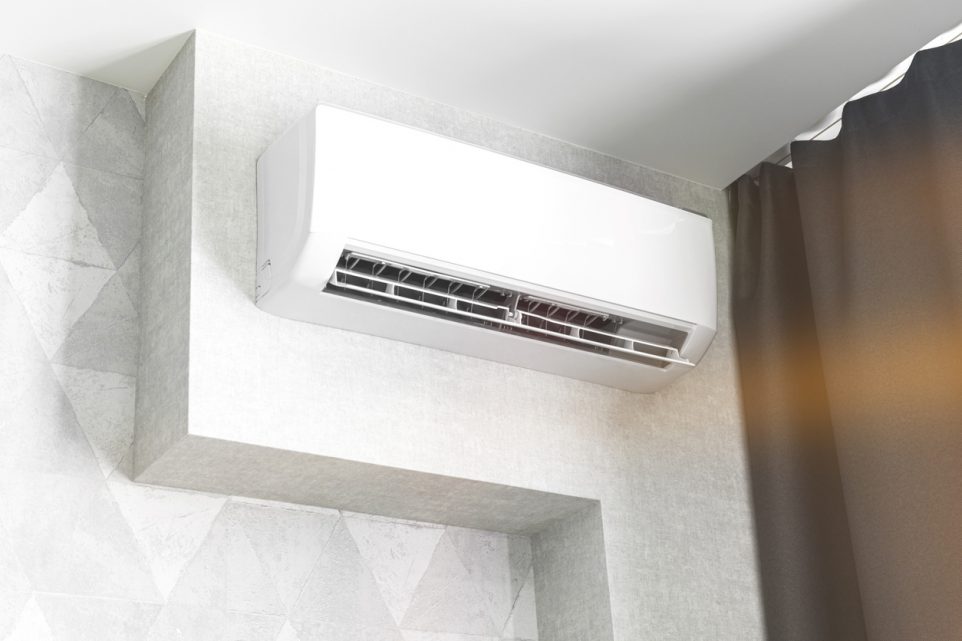Forced Air vs. Central Air: What Is the Difference?

Whether you’re a homeowner looking to upgrade your existing air conditioning system or a first-time homeowner deciding on the best system, you’ve probably come across the terms “forced air” and “central air.” How do you know which one is right for you and your home?
In this post, we’ll discuss the differences between forced air and central air systems and help you determine the best option. We’ll discuss the differences in cost, efficiency, environmental friendliness, and more so you can make an informed decision. Read on to learn more and ensure you get your home’s right air conditioning system.
What is Central Air HVAC System?

Central air conditioning systems cool air at a central location and distribute it through ducts and vents throughout the home. They are favored for their ability to maintain a consistent temperature across different rooms, providing a uniform cooling effect.
The installation of central air systems can be costly due to the extensive ductwork required, especially in homes that do not already have an existing system in place. However, they tend to be quieter and more energy-efficient in operation, which can lead to lower ongoing costs.
Pros:
- Consistent cooling and heating throughout the home.
- Quieter operation compared to some ductless systems.
- Can be more aesthetically pleasing since most components are hidden.
Cons:
- Higher upfront installation costs if ductwork is not present.
- Potential for higher energy costs due to heat loss through ducts.
- Requires regular duct cleaning and maintenance.
What is Forced Air System?

Unlike central air systems that only cool the air, forced air systems both heat and cool the home using the same ductwork. These systems operate by forcing air over a heat exchanger to heat the space and using a cooling unit for air conditioning.
The installation costs for forced air systems are generally lower than those for central air systems, as they typically involve simpler and less extensive modifications to existing structures. However, forced air systems may have higher operational costs due to less energy efficiency. Additionally, they might not maintain a temperature as consistently as central air systems and could be noisier during operation.
Pros:
- Less expensive to install compared to central air systems.
- Provides both heating and cooling, offering year-round comfort.
- Rapidly changes room temperatures for immediate comfort.
Cons:
- Blower or fan noise can be noticeable, which might be disruptive.
- Ductwork can accumulate dust and allergens, potentially reducing indoor air quality.
- Possible leaks in ductwork can lead to reduced efficiency and higher energy costs.
What Is a Ductless Mini-Split?

Ductless mini-splits consist of an outdoor unit and one or more indoor units that distribute air directly into each room. Mini-splits are highly efficient and can be installed in various locations without the need for ductwork. They offer individual zoning capabilities, which means you can control the temperature in different rooms or zones independently. This can lead to significant energy savings, especially in homes where all rooms are not in use at all times.
Pros:
- No ductwork needed, making installation simpler and often less expensive in homes without existing ducts.
- Individual zoning capabilities to save on energy costs.
- Quieter operation than window units and some older central systems.
Cons:
- Can be more expensive upfront than other systems when multiple indoor units are required.
- Each indoor unit is visible within the room, which may not suit all decor styles.
- Potential for inconsistent temperatures between rooms if not properly sized and installed.
Forced Air vs. Central Air
The biggest difference between these two systems is that forced air requires multiple room-mounted air conditioners or single large rooftop units. In contrast, central air relies on one all-in-one single-unit for both cooling and heating needs.
Forced air systems can be noisy due to multiple fans running simultaneously, while central air systems are quieter due to only one fan motor operating at a time. A further difference is that central air systems are better at humidity control, using dedicated return ducts for moisture removal. In contrast, forced air systems rely on air leakage indirectly removed by the outdoors during the cooling cycle.
Finally, central air offers greater energy efficiency due to its single large unit design as opposed to forced air, which uses several smaller components working together to achieve cooling or heating needs; you can notice this difference in larger homes or commercial buildings where it’s likely that some rooms will not need cooling or heating at any given time.
Installation Costs of Forced Air and Central Air Systems
When it comes to installation, the cost of putting in a forced air system typically ranges between $3,000 to $7,000. This variation largely depends on the size of your home and the condition of existing ductwork. If your home already features compatible ductwork, the lower end of this range might be more accurate. However, if modifications or repairs to the ductwork are necessary, costs can climb towards the upper range.
In contrast, central air systems generally require a higher initial investment. Homeowners can expect to pay between $5,000 to $10,000 for installation. The higher costs are attributed to the complexity of the system, including the need for an outdoor condenser unit and more intricate ductwork. The installation might also vary in cost depending on additional factors like home size and the specific setup required.
Initially, a central air system might require a higher investment but can potentially offer savings in the long run with its energy efficiency and lower operational costs. On the other hand, while a forced air system may be cheaper to install, its higher energy use could result in increased costs over time.
Central Air Systems vs. Ductless Mini-Splits
Central air systems are ideal for those who prefer a mostly invisible system with consistent temperatures throughout the home. They are less visible inside the home, with only the air vents visible in each room. This can be more aesthetically pleasing for homeowners who prefer a minimalistic look. On the other hand, ductless mini-splits have indoor units mounted on the walls of each room or zone they serve, which can be more visible and might not blend seamlessly with every decor style.
Ductless mini-splits offer superior zoning capabilities because each unit can be controlled independently, allowing for different temperatures in each room or zone. This is particularly advantageous in houses where room usage varies significantly, helping to save on heating and cooling costs by only conditioning occupied spaces. Central air systems, while capable of zoning, often require additional components like zone dampers installed within the ductwork, which can add to the complexity and cost of the system.
Modern central air systems are designed to be very quiet, especially compared to older models. However, ductless mini-splits are generally quieter than even the quietest central air systems because the noisiest component, the compressor, is located outside.
Ductless mini-splits offer greater flexibility in terms of scalability. You can start by installing a single unit and add more as needed, which is ideal for budgeting or as usage needs change over time. Central air systems do not offer this level of scalability; once installed, expanding or reducing capacity can be cumbersome and expensive.
Installation
Central air systems require extensive ductwork to distribute air throughout the home, which can be a significant undertaking in homes that lack existing ducts. This often makes the initial installation more invasive and costly.
Ductless mini-splits, on the other hand, do not require ductwork, making them easier and generally less expensive to install, especially in older homes or additions where no ductwork is present.
Energy Consumption
They are also generally more energy-efficient than central air systems. The lack of ducts reduces energy losses typically associated with ductwork, which can account for more than 30% of energy consumption, especially if the ducts run through unconditioned spaces like attics or crawl spaces. Central air systems, while improved in efficiency over the years, still involve higher energy use due to these losses.
What To Consider When Choosing Between Forced Air and Central Air
When deciding which type of system is right for you, consider the size of your home or commercial building; if it’s small enough that you don’t need much climate control, then being able to install multiple individual room-mounted units may save you money upfront (although you will still need to factor in regular maintenance). However, suppose your space is large enough to require more than one unit. In that case, a centrally controlled system may be worth investing in due to its superior energy efficiency and overall climate control capabilities (especially when dealing with humidity).
Whether you opt for forced or central air, make sure any installation includes appropriate thermostats so that users can regulate temperature effectively using either manual dial settings or smart controls connected via Bluetooth or WiFi; also remember that installing an energy-saving window unit or windowless portable AC alongside regular HVAC use can help reduce energy consumption associated with larger rooftop units or multiroom mounted units respectively as supplemental cooling sources during warmer months.
When it comes to choosing between forced air and central air systems, there are several factors to consider. With these tips in mind, you can be sure to make the right decision for your home and enjoy the comfort of an efficient air conditioning system.